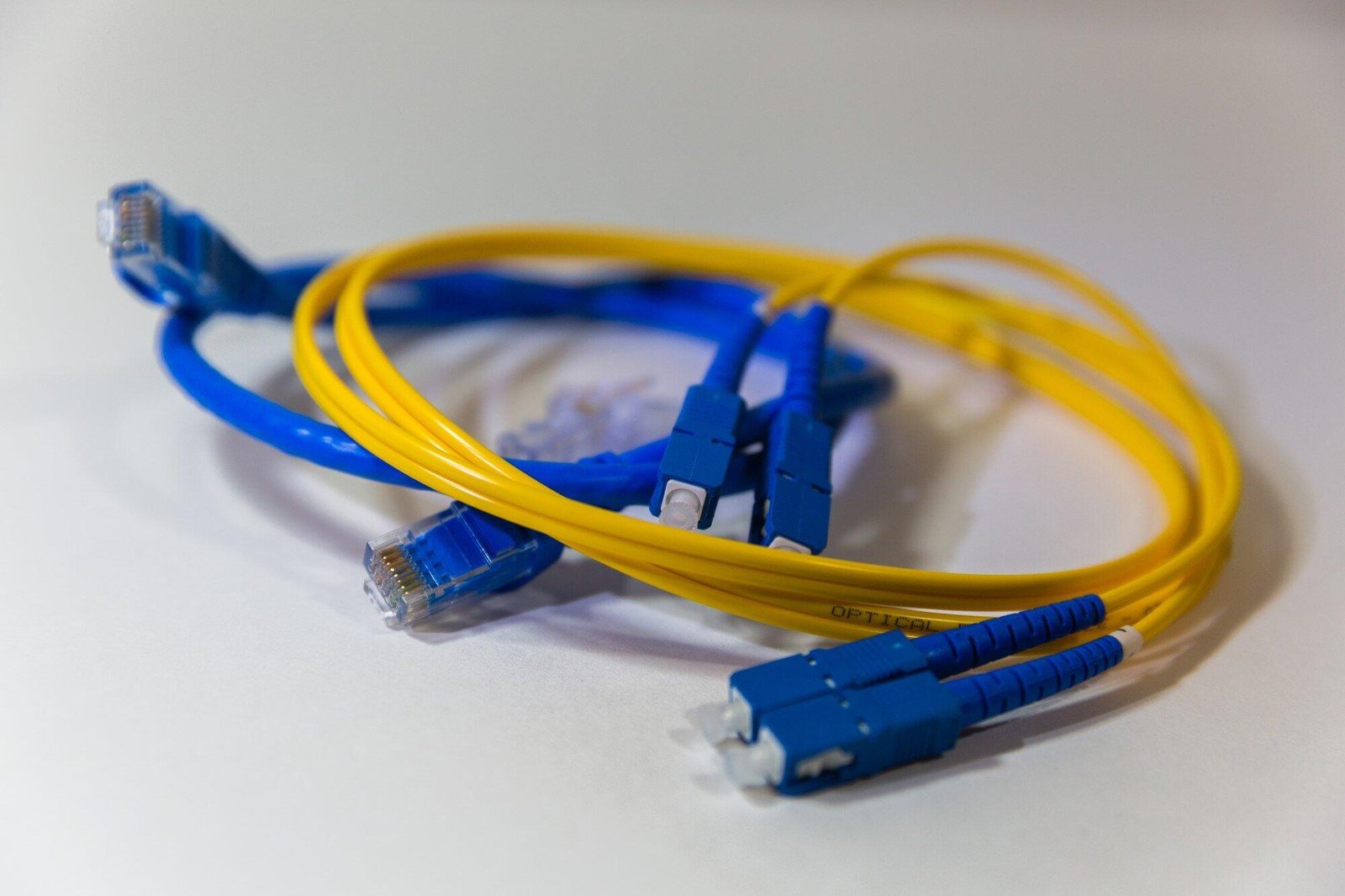Technology
The Future of CNC Machining: How Technology is Shaping the Manufacturing Process

Key Takeaways
- CNC machining integrates advanced technologies to enhance precision, efficiency, and innovation in manufacturing.
- Machine learning and AI are crucial in predicting maintenance and optimizing manufacturing processes.
- Sustainability practices in CNC machining reduce waste and energy consumption.
CNC (Computer Numerical Control) machining is profoundly transforming the manufacturing industry. Manufacturers have achieved unprecedented precision, efficiency, and innovation by integrating technologies like Royal CNC. As technology rapidly evolves, the role of CNC machining in the manufacturing process continues to expand, driven primarily by advancements in machine learning and AI. The applications of CNC machining are nearly limitless, encompassing sectors from aerospace to healthcare. This article delves into how technological innovations push the boundaries of what CNC machining can achieve, making it an indispensable tool in modern manufacturing.
The Evolution of CNC Machining
Since its inception, CNC machining has undergone significant transformations. Initially designed to automate traditional machining processes and reduce manual labor, CNC technology has advanced to include sophisticated software and hardware, offering remarkable precision and control. Early CNC machines were limited in their capabilities, performing relatively simple tasks based on pre-programmed instructions. However, the introduction of computer-aided design (CAD) and computer-aided manufacturing (CAM) software revolutionized CNC machining, producing highly complex parts with exceptional accuracy. Modern iterations of CNC machines are equipped with advanced features such as multi-axis control and real-time monitoring, allowing manufacturers to produce intricate components with minimal human intervention. These advancements have made CNC machining a cornerstone in today’s manufacturing landscape, capable of performing tasks that were once deemed impossible.
Technological Innovations in CNC Machining
Integrating machine learning and AI in CNC machining has improved production efficiency and reliability. AI uses predictive analytics to forecast machine failures, minimize downtime, and optimize machining processes. One practical application is tool wear monitoring, where AI algorithms analyze sensor data to prompt timely replacements and adjust machining parameters in real-time. The Internet of Things (IoT) transforms CNC machining by enabling real-time data collection and remote monitoring. IoT-connected CNC machines share information, improving automation and transparency. IoT sensors detect anomalies, allowing for proactive interventions and remote troubleshooting and reducing the need for on-site maintenance.
Benefits of Modern CNC Machining
One of the key benefits of modern CNC machining is its enhanced precision. The technology ensures that each component is manufactured to exact specifications, reducing the margin of error. CNC machines operate continuously with minimal human intervention, leading to faster production and increased output. Automated tool changes, high-speed machining, and optimized cutting paths reduce cycle times and boost productivity. CNC machines can also perform multiple operations simultaneously, streamlining the manufacturing process. Sustainability is increasingly essential in CNC machining. Modern CNC machines are engineered to minimize waste and reduce energy consumption. With optimized cutting paths and advanced material usage strategies, manufacturers can significantly lower their environmental footprint while realizing cost savings. Closed-loop control systems allow CNC machines to make precise adjustments based on real-time feedback, ensuring efficient material usage. Adaptive machining techniques automatically optimize cutting parameters to reduce waste and improve surface finish. Additionally, CNC machines are now designed with energy-efficient components and processes, further contributing to sustainability efforts.
Future Trends in CNC Machining
Predictive maintenance in CNC machining utilizes AI and machine learning to anticipate potential equipment failures. This proactive approach helps to prolong machinery lifespan and reduce costs. Predictive maintenance systems can identify early signs of wear and tear by analyzing data from various sources. Machine learning algorithms then generate maintenance schedules based on the predicted probability of failure, ensuring that interventions are carried out optimally. This method differs from traditional preventive maintenance, which relies on fixed schedules and may lead to unnecessary activities. The CNC machining industry is witnessing the emergence of advanced materials with superior properties, such as increased durability and reduced weight. These materials offer new possibilities in manufacturing and are being used in aerospace, automotive, and other industries. CNC machining technologies adapt to handle these materials using specialized tools and techniques for precise and efficient machining.
Conclusion
The future of CNC machining is undeniably bright, driven by continuous technological innovations that enhance manufacturing processes. From machine learning and AI to IoT and advanced materials, the industry is poised for remarkable growth and transformation. By addressing current challenges and embracing these advancements, CNC machining will continue to be a pivotal component in the manufacturing landscape, delivering unparalleled precision, efficiency, and sustainability.
Did you find this article helpful? Check out the rest of our blog for more!
Technology
Wiring Types Explained: From Copper to Fiber Optics

Have you ever thought about the different types of wires that power your home? Choosing the right home electrical wiring is important for both safety and performance.
From copper wires to coaxial wiring, each type has its own benefits. Understanding these options can help you make better decisions for your home setup. Ready to learn more about what runs behind your walls? Keep reading to explore the best wiring types for your needs!
Copper Wiring
Copper wiring is one of the most commonly used types of wiring in home electrical wiring systems. It is known for its excellent conductivity, which helps in efficient power transmission. Copper wiring is durable and can handle higher electrical loads without overheating. It also resists corrosion, making it a reliable option for long-term use.
In residential homes, copper wiring is often preferred for safety reasons. This type of wiring is flexible and easy to work with, which simplifies installation. Copper wiring is used in a variety of applications, from household wiring to industrial machines. Despite being more expensive than other options, its benefits often outweigh the cost.
Aluminum Wiring
Aluminum wiring is a lighter and less expensive alternative to copper wiring. It is commonly used in power distribution for large-scale applications, such as utility grids. Though it conducts electricity well, aluminum wiring is not as efficient as copper and requires a thicker gauge to handle the same electrical load.
One drawback of aluminum wiring is that it expands and contracts more with temperature changes, which can cause loose connections over time. This may lead to a higher risk of overheating if not properly installed. In household wiring systems, aluminum wiring was sometimes used in older homes in place of copper, but today it is less common for residential purposes.
Fiber Optic Wiring
Fiber optic wiring is a modern solution used for transmitting data at high speeds. Unlike copper or aluminum wiring, it uses thin strands of glass or plastic to send signals in the form of light. This makes fiber optic wiring ideal for internet connections, as it provides faster speeds and greater bandwidth.
It is also less prone to interference from electrical signals, ensuring a more stable and reliable connection. One advantage of fiber optic wiring is that it can transmit data over long distances without losing signal strength. It’s also resistant to corrosion and more durable than traditional wiring. For more information on installing fiber optic systems, check out structured cabling installation linked here.
Coaxial Wiring
Coaxial wiring is a type of electrical cable commonly used for transmitting television signals and internet connections. It has a central copper conductor surrounded by insulation, a metal shield, and an outer plastic cover.
The design helps protect the signal from interference, making it reliable for sending data over short distances. Coaxial cables are often used in home entertainment systems, connecting TVs to cable or satellite services. They are also used in some internet and telephone systems.
Learn More About Wiring Types
There are different types of wiring for different needs. Copper and fiber optics are the most common options. Each has its own benefits and drawbacks.
Understanding these can help you make the right choice. You can find more information online or in guides. Knowledge of wiring types can help you in your projects.
Looking for more tips and ideas? We’ve got you covered. Check out some of our other posts now.
Technology
The Ultimate Guide to SDS Software: Everything You Need to Know

Are you trying to make safety data easier to manage?
The right SDS software can help. Keeping up with safety data sheets is important for staying safe and following the rules. This guide gives you everything you need to know about SDS software, including its features, how it can help, and tips for using it.
Learn how the right software can save time, make work easier, and keep things safe. Whether you’re new to SDS software or thinking of switching, this guide will help you find the best solution for your needs.
What SDS Software Does
SDS software helps businesses organize their safety data sheets in one place. It makes it easy to store and find important information about chemicals, including hazard warnings and how to handle them safely.
This software is also useful for keeping a detailed hazmat inventory, making sure all dangerous materials are listed and tracked. With SDS software, businesses can quickly access up-to-date safety data.
You can find the best online SDS here to make managing safety data simpler and more efficient.
How It Saves Time
SDS software helps save time by doing many tasks automatically. Instead of sorting through papers or updating files by hand, the software does it for you. This means less time is spent looking for safety information or checking details on dangerous materials.
The system makes it easy to find the data you need quickly, which is useful for safety checks or inspections. Whether you are dealing with chemicals or focusing on water safety, SDS software makes the process faster and easier.
By reducing manual work, it gives businesses more time to focus on other important tasks.
Why Compliance Matters
Following safety rules helps keep people safe and stops fines. SDS software makes it easier for businesses to follow these rules by keeping safety sheets in order. When you stay compliant, you have the right information about dangerous materials, so workers know how to stay safe.
This helps prevent accidents and keeps the business ready for safety checks. If rules are not followed, companies can get fined, shut down, or have workers get hurt.
Using SDS software makes it simple to follow safety rules, keeping both the workers and the business safe from problems.
Choosing the Right Software
Picking the right SDS software is important for safety and getting work done quickly. Start by finding software that is easy to use, with a simple layout that everyone can understand.
Look for features that meet your needs, like automatic updates for safety sheets and tools to manage dangerous materials. Good customer support is also important, as it helps fix problems fast.
Make sure the software allows easy access to information on both computers and phones. Reading what other users say about the software can help you decide.
By choosing the right SDS software, your business can improve safety, and make sure everyone has the information they need.
Unlocking Safety and Efficiency with SDS Software
In conclusion, SDS software is important for managing safety data sheets and following safety rules. Using the right SDS software helps businesses work faster, reduce accidents, and save time.
It allows workers to quickly find important safety information, making it easier to handle dangerous materials. Investing in SDS software is key to creating a safer workplace and improving how your business runs.
With the right tools, everyone can stay safe and do their jobs better.
Did you find this article helpful? You can check out our website for more awesome content like this.
Technology
Unlocking Potential: Exploring BE78N-S7J-E Insights

 Entertainment5 months ago
Entertainment5 months agoSandra Orlow: Exploring the Life and Legacy of a Cultural Icon

 Business6 months ago
Business6 months agoTex9.Net Crypto: Fast, Secure International Money Transfers with Competitive Rates

 General2 months ago
General2 months agoDiana Nyad & Bart Springtime: A Swim to Success

 General2 months ago
General2 months agoBaby Alien Fan Bus: Watch Parts 2 & 3 on Twitter, Reddit!

 Business6 months ago
Business6 months agoSnapchat Planets: Exploring Your Streak Universe

 General4 months ago
General4 months agoDeeper Dive into myfavouriteplaces. org:// blog

 Business6 months ago
Business6 months agoWhat is O Farming: How to Make Money Online and Its Start-Up Benefits

 Business6 months ago
Business6 months agoFintechZoom Apple Stock: Real-Time Insights and Expert Analysis

















